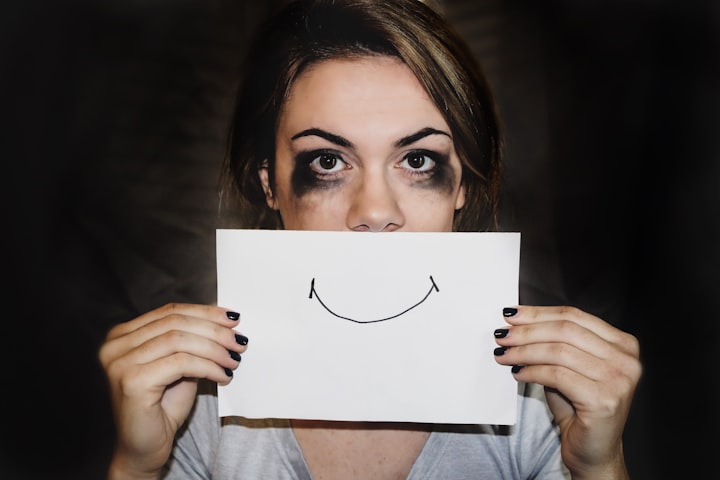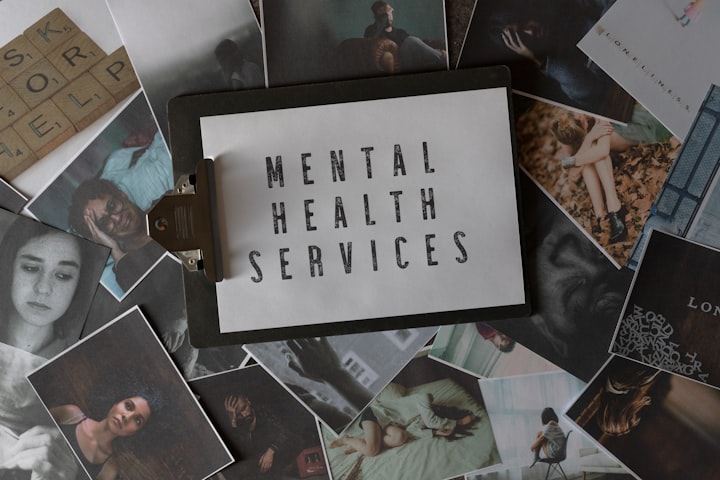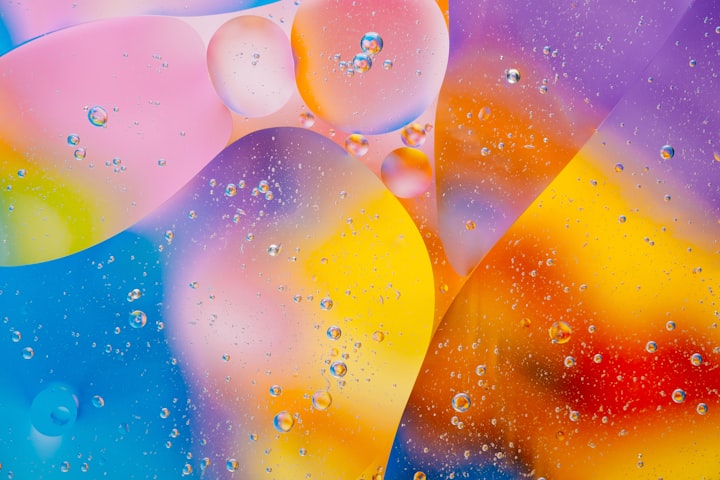The Attention Crisis
Social Media, Generation Z and the Lack of Individuality Problem

In the last ten to fifteen years, a whole new generation has been born - the generation that has never lived without social media. In some cases, when the child is born, the parents have created a Facebook photo album of them from baby to teenager, or in other cases there have been entire accounts dedicated to this child from the age of only a few months in order for family to communicate with them and then we have the dreaded family who post endless photos on social media of being ‘with the new baby’. As these children grew up, they have been taught to seek attention and approval from social media. They have seen ‘social media influencers’ as people to look up to and aspire to be since communication has been commodified as ‘likes’ and ‘comments’. The more you can get of these things, the more popular and successful you seem to others. Social media plays on the insecurity that you are never really going to be popular and who is more concerned about popularity than teenagers? Nobody. Concerned about everything from the way they look to how their lives have been curated online, teenagers are the most vulnerable to falling into every trap on social media from buying things from most of the adverts they get to following pages that tell them suggestively that they aren’t good enough to achieve high like-comment status. But why do they seek attention and what are the real harms of it? I want to explore in-depth what it means to be a teenager wanting attention online.

There is a quotation by therapy company CEO Brooke Sprowl which states: "There's a human tendency to want to find a sense of identity in what we do and how we look from external sources…” which I think is true of anyone, but is in fact more true when it comes to teenagers since they are in the stage of their lives where a personal identity is truly formed. She also states that since teenagers do not have much life experience, they tend to take criticisms of their lives more to heart and internalise feedback a lot more with the very nature of the search being to form friendships on the basis of identity. The criticisms and negative feedback is not just coming through in their parents telling them their room is unclean, but is now coming through in ‘Post X got more likes than my post which was Post Y. Why did that happen?’ And this is translated into negative feedback about the teenager’s worth and popularity to others. There are suggestions that no response is actually a lot worse than a comparative one. For example: ‘What if Post Y gets no likes?’ Would be far worse than the earlier, more comparative example. This is because the lack of response would translate into ‘nobody cares’ rather than a weird algorithm. The lack of attention would thus be internalised and would extreme sadness, possibly even leading to depression if this cycle was repeated enough times.

According to a study done by Northwestern University teenage girls from the age of 13-18 use social media on average for seven hours a day and it has been analysed by the study that much of this is happening at night where counsellors have stated that it interferes with a good night’s sleep. ‘Scrolling’ seems to be a major issue across many boards and this contrasts to the way in which teenagers seek attention online: posting many times a day on social media, often with a disregard for personal safety or security. For example: If a teenage girl has ten friends on social media that are all girls and are all the same age as her. Each person posts five times a day which creates fifty new posts from other people that each person is seeing. Now, to multiply this by about one hundred or one thousand means that there is no lack of comparative content to sift through when the mind is not active as it is during the peaks of the day. One way therefore, that teens seek attention online is through oversharing. Oversharing is when the teenager posts many times a day and does not really understand how it could impact their safety, their security or even their future. Whereas boys are studied to share things that are less detrimental to their personal security, girls are more empathetic by nature and often share things that are internal and therefore, become more worried when the engagement is not what they had hoped for as they feel it is a personal attack on their character, appearance or identity. In a 2018 study on what various teenagers post on social media, girls were the most personal with ‘emotions’, ‘family’ and ‘accomplishments’ coming it at the highest ranking topics for girls aged fifteen through seventeen.

But there is an even bigger issue at play when teenagers want to fit in with the popular crowds online as they want to in real life. It leads to copied or pretended behaviours through suggestibility. Uttom Chowdhury recently appeared in a 2021 edition of Wired Magazine in which he discusses the rise in young girls, namely teenagers, getting Tourette’s syndrome when 50% of the time it is passed through lineage and the girls seem to have no genetic link to the syndrome whatsoever. There was a huge question about what was happening. What was actually happening was a phenomenon on the social media website, TikTok where the popularity of Tourette’s accounts were on the rise for the case of raising awareness. In order to feel like a part of the group and gain popularity, main teenage girls were copying the symptoms of Tourette’s syndrome and posting the videos online. Chowdhury has stated that this is similar to a psychological requirement in the actual ease in order to gain popularity saying: ‘if they see something, it’s very easy to copy, there’s that suggestibility. Watching these videos could be making people copy it…’ (2021, Wired).

This is similar to another ‘trend’ of attention that seems to be going on within the realms of social media according to Scientific American and the American Addition Centres all over the country and all over the world. This trend is called ‘faking mental illness’ - a trend particularly prescribed to teenagers of Generation Z. A new survey in 2021 suggests that within the age range of teenagers aged twelve through seventeen there is a statistic in which one in three of them find that pretending to have a mental illness would make them unique and make them stand out amongst their friends, including garner sympathy and followings on social media. This can range from having anything from depression to more serious cases of self mutilation and bipolar disorder. The goal here seems to fit in with their classmates on a social level, but to be different on what they consider to be a more ‘glamorous’ level in order to get more attention than other people in real life and on social media. This can cause serious problems for the teenager who will try so hard to keep up the pretence that they are unwillingly giving themselves imposter syndrome because of it.

The method of gaining attention is therefore, at first, fairly harmless unless intimate information is shared. But with the growing rate of ‘trends’ and the Generation Z glamorisation of mental illnesses, it can grow into something far more sinister in which one in three teenagers have stated to have faked their mental illness. Therefore, as a professional, parent or carer, being able to distinguish between the teenager with a real mental illness and a teenager faking a mental illness becomes more difficult and can often result in dangerous errors of judgement for no fault of their own.

In a 2019 article by Bushra Farooq for The Association for Child and Adolescent Mental Health, this faking of mental illness can turn into a real life consequence which would make any adult very worried for the teenager involved. For example: taking the mental illness most commonly ‘faked’ on social media - depression. If a teenager is faking depression, sooner or later because of the sheer amount of time they spend on social media, they will eventually fully convince themselves they have it and then, they actually have it. This has been one of the main causes of the increase in self-mutilation and it is far higher in girls of any teenaged age group than boys. There could be some reasons for this with the first being that girls tend to actively seek out help more than boys do and that there are reasons already prescribed to why girls may self-mutilate with one of the most common reasons being negative appearance judgement based. This is especially true for girls aged thirteen through sixteen in which they are most vulnerable to self-mutilation or self-poisoning. These behaviours have been seen in all genders to manifest in clusters which require identification in order to help. These clusters are similar to how teenagers use social media at nighttime referenced earlier on in the article - it happens most at one particular time in one particular condition. If there is a correlation between the cluster of self-mutilating behaviour and the use of social media, then there is safe ground to say that one is a consequence of the other, or at least the two may be linked. The question is, do mental health breakdowns or mental health crises happen more often at night or during the day? For this question, there is no data to strictly state that this is the case, however many statistics support that sleeplessness may warrant an opening for mental health crises to happen.

In an article for the International Journal of Environmental Research and Public Health, Throuvala, M.A.;Griffiths, M.D.; Rennoldson, M.; Kuss, D.J. posed the debate of how severely the mental health of teenagers would be impacted through the continuous use of social media and how it would affect ‘multiple psycho-emotional domains.’ But also suggests that we need to separate social media addiction and social media use in order to understand the issue properly. It seems to suggest that those who do not use social media addictively tend to have a lower rate of mental illness and negative consequence. It suggests that the social media addiction of the newer generation has been led on by accessibility in which a high level of people displayed ‘problematic smartphone use’ with one in four of those being adolescents. This could suggest that these levels of accessibility are driving the addiction to social media and therefore, giving continuous access to what the teenager could be suffering with, most likely a form of anxiety or depression. It states that increased screen times have been ‘a factor contributing to shorter sleep duration among adolescents’ and that increased social media usage has a negative impact on cognition and information recall and the retention of information. Other behaviours that have been caused by an increase use in smartphones and social media include that the distraction of smartphones has led to a decrease in academic performance and that more than 50% of teenagers report a daily distraction caused by smartphones and social media. This article actually suggests that it is the combined uses of social media that tend to supply the mind with negative feedback, feeding the mental illness. These combined uses include: compulsive texting, daily interruptions through notification, excessive self-talking and negative comparison, narcissism, the fear of missing out and compulsive behaviour checking. They also can include on some level: aggression, cyberbullying and to more extreme situations, leaking private information or intimate photographs of another individual. All these behaviours put together create a toxic environment in which the teenage mind would become overwhelmed with the idea of expectation to others and how they appear to friends and follower alike. The very idea that more friends is equated to a better social media presence means that the compulsive texting will simply lead on to more engagement with more dangerous behaviours, such as negative comparison to others perceived to have more, or better social lives.

In the media, this has become far more of a large-scale problem in which dangerous behaviours of mental illnesses are becoming ‘trends’ and ‘fads’ which teenagers like to participate in. For example: the ‘ticks’ of Tourette’s Syndrome has often been considered a ‘TikTok fad’. This was directed towards my attention due to my own personal illnesses (which I choose not to disclose here), of someone who was not only pretending to have Tourette’s Syndrome, but was also pretending to have a number of very serious medical problems which would have been impossible to suffer from all together and still be able to function day to day normally and make daily TikTok videos. A teenager who will be kept anonymous for reasons that they are a minor had not only faked common mental illnesses, but had also been accused of faking Huntington’s Disease, a serious medical problem which can kill. This teenager had also faked having anaemia and seizures. In the mental illness category, they had faked having PTSD, ADHD and Autism, all medical and mental illnesses were debunked by family members who had confirmed that this teenager was simply making it up in order to gain a social media following. This may not be true all of the time, but can be harmful for teenagers who are seeking help. Instead of awareness getting in the media, it is the pretender that becomes the media sensation for pretending. They therefore become the most vilified person on the internet for that space of time and hurt the very cause they were seeking out to prove they had. Children and teenagers actually suffering from these illnesses are therefore lumped in socially with the pretender because of social media being about grouping. Mental illness and medical problems have been a way of grouping people for many many years, even before social media. Groups that help with various mental illnesses have been around since before the internet. It is no surprise that the culture surrounding faking mental and medical illness has come to hurt the causes it was trying to push out into the waters with the only people really suffering are the real sufferers who get lumped in with the pretenders.

In conclusion, there are many ways in which social media has led to the rise in attention seeking amongst Generation Z. Many online critiques and public thinkers of the social stratosphere have suggested that this is due to a lack of personality and individuality with the requirement to be socially the same having prevalence over all else, and then the want to ‘stand out from the crowd’ being a part of human nature - we all want to feel individual. But other reasons also suggest that teenagers crave attention when they are not feeling appreciated so I suggest that one of the ways that we could discourage the faking of mental illness, or even help those who do have mental illnesses is to encourage creative practice. Encouraging a teenager to take up something creative regardless of whether they do it well or not is always better than talking down to them, pretending like they do not exist or suggesting that every problem they have has arisen from social media because even though it has, there are still solutions to try that we have not even thought of yet.
Citations List:
- The Online Master of Arts in Counseling Program from The Family Institute at Northwestern University (2020): https://counseling.northwestern.edu/blog/effects-social-media-teen-girls/
- https://www.pewresearch.org/internet/2018/11/28/teens-and-their-experiences-on-social-media/
- https://treatmentsolutions.com/blog/faking-mental-illness/
- Farooq, B. (2019): https://www.acamh.org/blog/self-harm-in-children-and-adolescents-attention-seeking-or-cause-for-concern/
- Throuvala, M.A.;Griffiths, M.D.; Rennoldson, M.; Kuss, D.J. Perceived Challenges and Online Harms from Social Media Use on a Severity Continuum: A Qualitative Psychological Stakeholder Perspective. Int. J. Environ. Res. Public Health 2021, 18, 3227. https:// doi.org/10.3390/ijerph18063227
About the Creator
Annie Kapur
200K+ Reads on Vocal.
English Lecturer
🎓Literature & Writing (B.A)
🎓Film & Writing (M.A)
🎓Secondary English Education (PgDipEd) (QTS)
📍Birmingham, UK






Comments
There are no comments for this story
Be the first to respond and start the conversation.